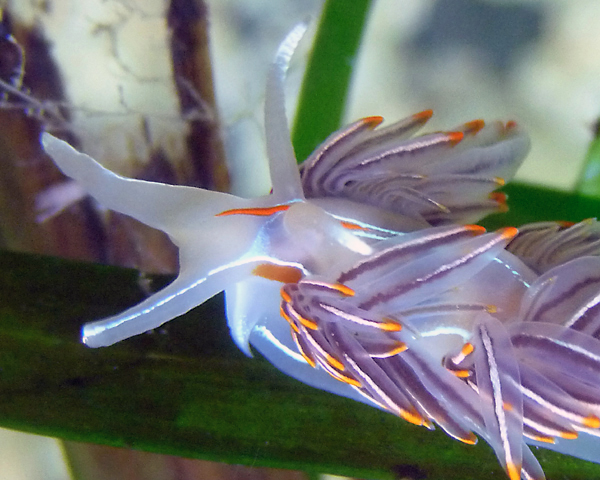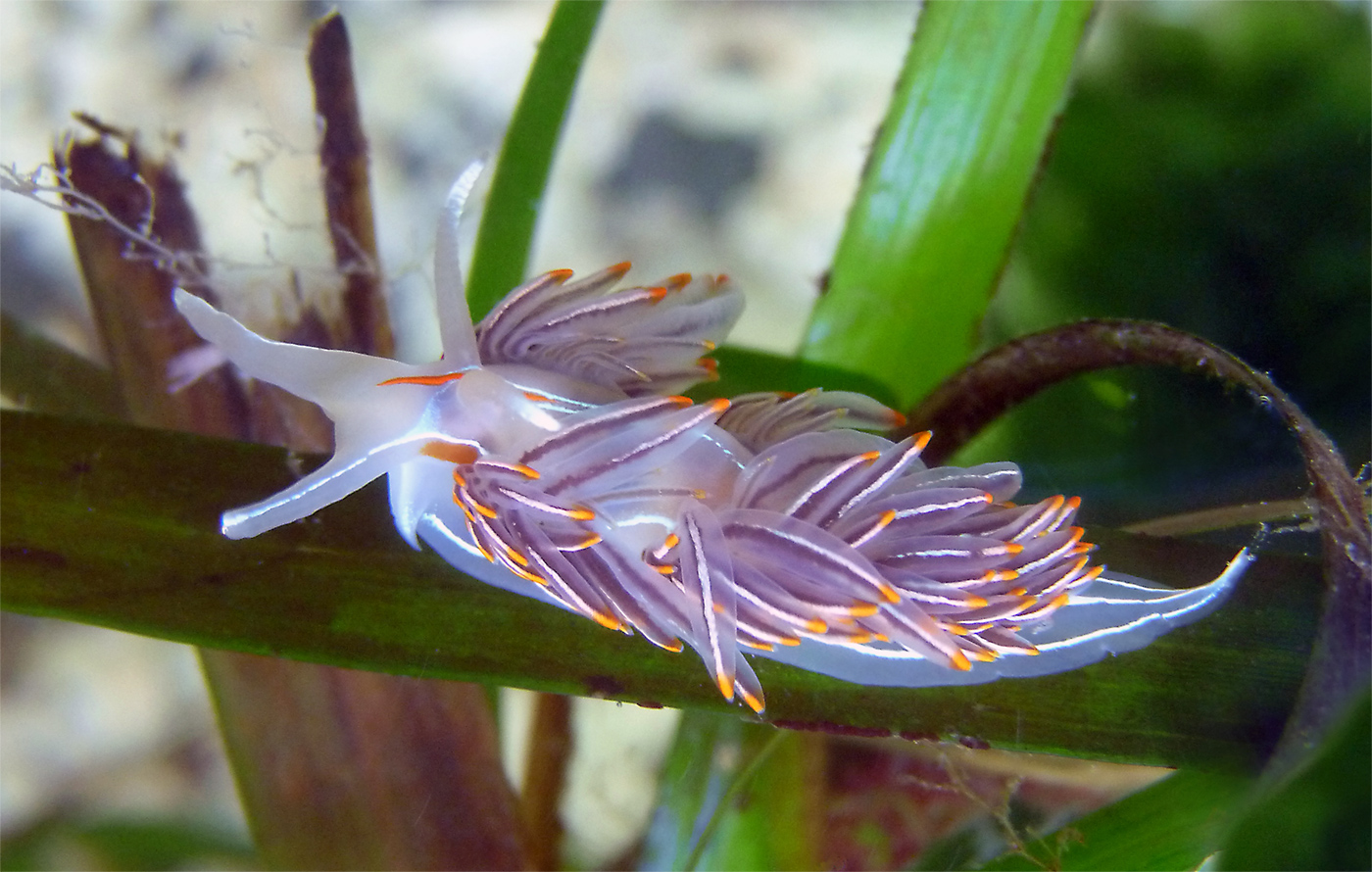Authors: Allie and Charlotte
Common name : Opalescent Nudibranch, Hermissenda Nudibranch
Scientific name : Hermissenda crassicornis
Size range : up to 8cm long but normally around 3cm
Identifying Features: The Opalescent Nudibranch is likely the most attractive nudibranch in the Pacific northwest. It has a transparent white to yellow-green body covered in many cerata, each with a vibrant white line than ends in an orange tip. These orange-tipped cerata are armed with many defensive unfired nematocysts (the stinging cells of jellyfish and sea anemones) that have been stolen from their cnidarian prey. This species often has a peacock blue line around the base of its sides, has a head with a pair of rhinophores (tentacles), and lacks a gill plume near its back end.

Habitat: The Opalescent Nudibranch lives on eelgrass beds, rocks, mud flats, docks, and certain other rocky intertidal areas from Alaska to as far as Baja California or even Kodiak Island and Japan. It is found from the intertidal zone to 115′ deep but it can live at virtually any depth of sea water. They thrive in shallow, warmer water and are larger and more common in these areas.
Food (Prey): Nudibranchs feed on hydroids, sponges, sea slug eggs or sea slugs, sea squirts, pieces of fish, other mollusks and sometimes anemones and barnacles. All are carnivorous and feed on a wide variety of animals. The Opalescent Nudibranch is one of the few cannibalistic species of nudibranchs.
Predators: There are few if any documented predators of the Opalescent Nudibranch except for other cannibalistic Opalescent Nudibranchs. Many nudibranchs have evolved to blend in with surrounding plants in order to avoid all predators while others have evolved to be brightly coloured to warn predators that they are or may be poisonous. They can also use an assortment of chemical defenses that make them toxic to predators that may include releasing a mucus-like acid from their skin when they come in contact with a potential predator. The Opalescent Nudibranch is brightly coloured to warn off predators because the tips of its cerata are armed with unexploded nematocysts from hydroids it has eaten.
Life Cycle: Nudibranchs are hermaphroditic but are unable to fertilize themselves. They also tend to lay their eggs in a gelatinous spiral. The Opalescent Nudibranch is common, abundant, and has a life cycle of four months. Other species of nudibranches can live up to a year, and a 6 year life span has been reported when the nudibranch is inside an aquarium.
References
Harbo, Rick M (2011). Whelks to Whales. British Columbia: Harbour publishing, Madeira Park, British Columbia
Sept, J. Duane (1999) The Beachcombers Guide to Seashore Life in the Pacific Northwest. Harbour publishing, Madeira Park, British Columbia
(Jan 14th, 2012). Nudibranch. Wikipedia. : en.Wikipedia.org/wiki/Nudibranch

